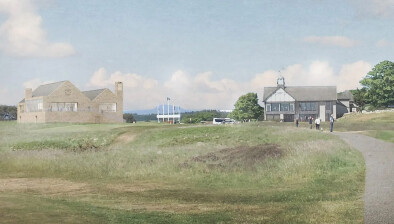Homeowner loses legal challenge against ‘High Hedge Notice’
A homeowner who was ordered to reduce the height of rows of trees along a boundary wall within the grounds of his property after his neighbours complained that they were overshadowing their garden has lost a legal challenge against a decision.

Brian Rizza was issued with a “High Hedge Notice” requiring him to trim the trees to a height of 2 metres, but claimed that the trees did not constitute a high hedge.
However, a judge in the Court of Session ruled that the reporter who made the decision following a visit to the property reached a conclusion that was “reasonably open to her” in the circumstances.
High Hedge Notice’
Lady Carmichael heard that the pursuer, the proprietor of Blair Lomond on Drummond Crescent in Inverness, was seeking judicial review of the decision by the reporter appointed by the Scottish Ministers.
The court was told that Mr Rizza’s property shares a boundary with 24 Drummond Circus owned by Roger and Catherine Niven, who made an application in October 2017 to Highland Council asking the local authority to find that the Leylandii along the boundary constituted a high hedge and to issue a notice in terms of section 1 of the High Hedges (Scotland) Act 2013.
The council issued the notice in July 2018, but Mr Rizza appealed against the decision, following which the Scottish Ministers appointed a reporter who issued a notice in December 2018 requiring that the 15 of the 17 trees along the boundary which ranged from 15 to 22 metres in height to be reduced to 2 metres.
The reporter, who carried out a site visit, concluded that two of the trees were outliers but found that 11 of them were planted in four rows with a further four forming a group, and therefore together constituted a high hedge as they created a “barrier to light” and caused “overshadowing” which reduced the neighbours’ “reasonable enjoyment” of their property.
The pursuer challenged the decision, arguing that that the trees which were the subject of the decision did not satisfy the criteria for a high hedge in terms of section 1 of the 2013 Act.
‘Reporter erred in law’
It was submitted that the reporter had “erred in law” in determining that trees which formed four separate rows, and trees which were not in any row, could, when considered together, meet the requirements of section 1(1)(a).
The statute referred to a row of trees in the singular and it was submitted that applying it to multiple or indefinite rows would lead to an “absurd result” as it meant a hedge would be “indistinguishable from woodland”.
It was argued that the reporter had failed to take into account relevant considerations, by failing to consider whether removing one of the rows identified would be sufficient to create “gaps” that would prevent the rows from being classified as a high hedge because they would not create a barrier to light.
The pursuer further submitted that had failed to consider whether the space between the trees indicated that they were woodland rather than a hedge, and that had taken into account “irrelevant considerations” in taking into account the species of the trees.
It was also argued that she had acted “irrationally” by finding that trees with space between them such that she could walk through would not significantly alter the privacy or outlook of the hedge owner when reduced to 2 metres.
‘Barrier to light’
However, the judge dismissed the petition after ruling that the reference in section 1(1)(a) of the 2013 Act to “row” included the plural.
In a written opinion, Lady Carmichael said: “There is nothing in the context of the 2013 to require otherwise. I do not accept the petitioner’s contention that the application of section 22 would produce absurd results because of the risk that a hedge might be formed of an indefinite number or rows and therefore be indistinguishable from woodland.
“There is no real risk of absurdity arising from the possibility that a high hedge might have an indefinite number of rows… It would, however, be perverse and absurd if the owner of a hedge were able to avoid a finding that it was a high hedge because he had planted more than one row of trees or shrubs so as to achieve a more dense and effective screen.
“I do not consider that the reference to ‘row’ was required in order to exclude single trees or shrubs. The use of the words ‘two or more’ achieve that end. It does indicate a requirement that the two or more trees or shrubs in question be planted in a linear fashion relative to each other.
“As use of the word ‘row’ includes the plural, it follows that the reporter did not err in law by reason of finding that a collection of trees in four identifiable rows was a high hedge.”
She added: “The decision maker must assess whether the trees she is considering are a hedge. She must consider whether the hedge is formed wholly or mainly by a row (or rows) of two or more trees. She must consider whether it rises to more than 2 metres above ground level, and whether it forms a barrier to light. If it fulfils these criteria it will be a high hedge.
“The considerations on which she founded are ones which she was entitled to take into account. The reporter was entitled to take into account information placed before her indicating that the leylandii had been planted in order to form a hedge, and the circumstance that they were located at the boundary between the two properties.”
Having visited the site and taken her own photographs of the trees, the reporter was in a position to make her own assessment of whether the trees formed a barrier to light and what action was required.
The judge concluded: “Having reached the conclusion she did as to the adverse effects, it was reasonably open to her to decide that the appropriate remedy was to require that the whole hedge be reduced in height.
“I am satisfied that the reporter reached her conclusion as to the action required on the basis of relevant considerations, and that her conclusion was one reasonably open to her in the circumstances.”















